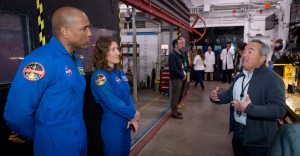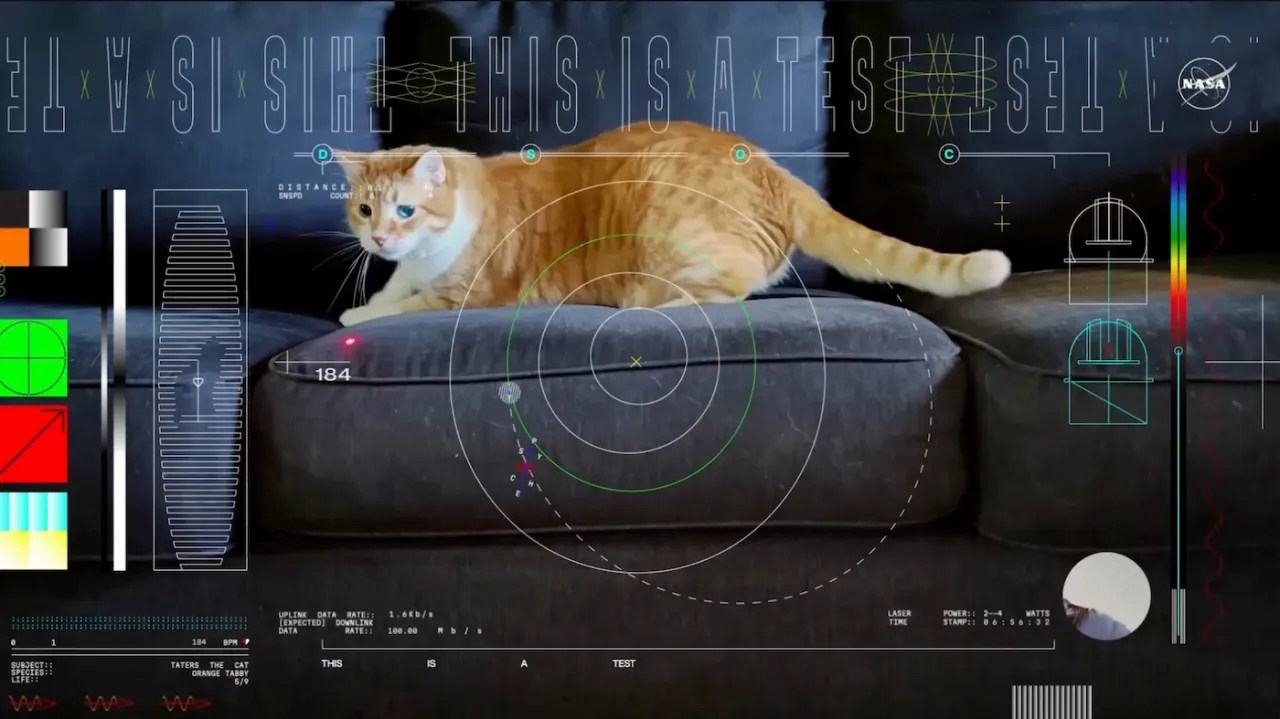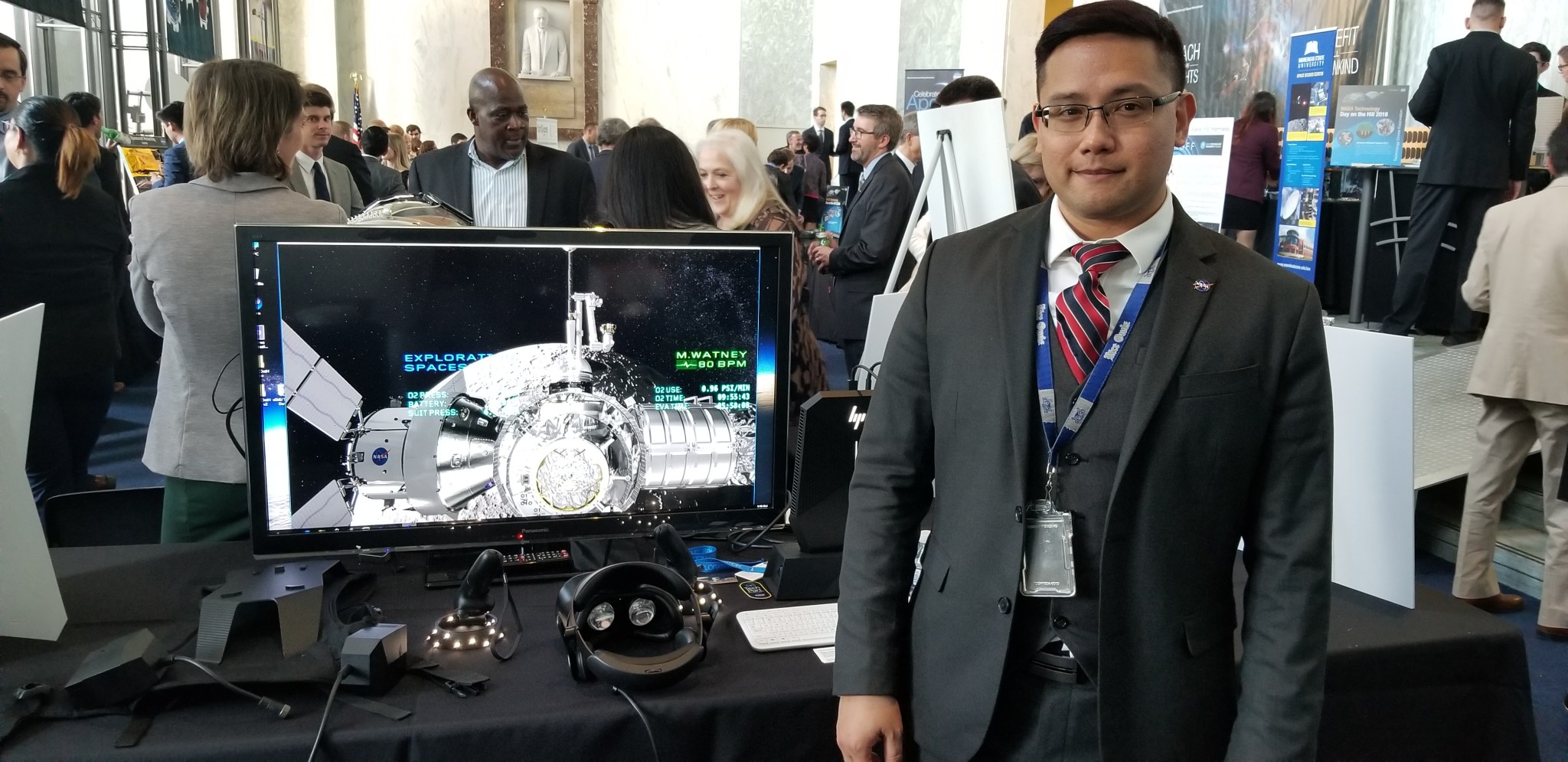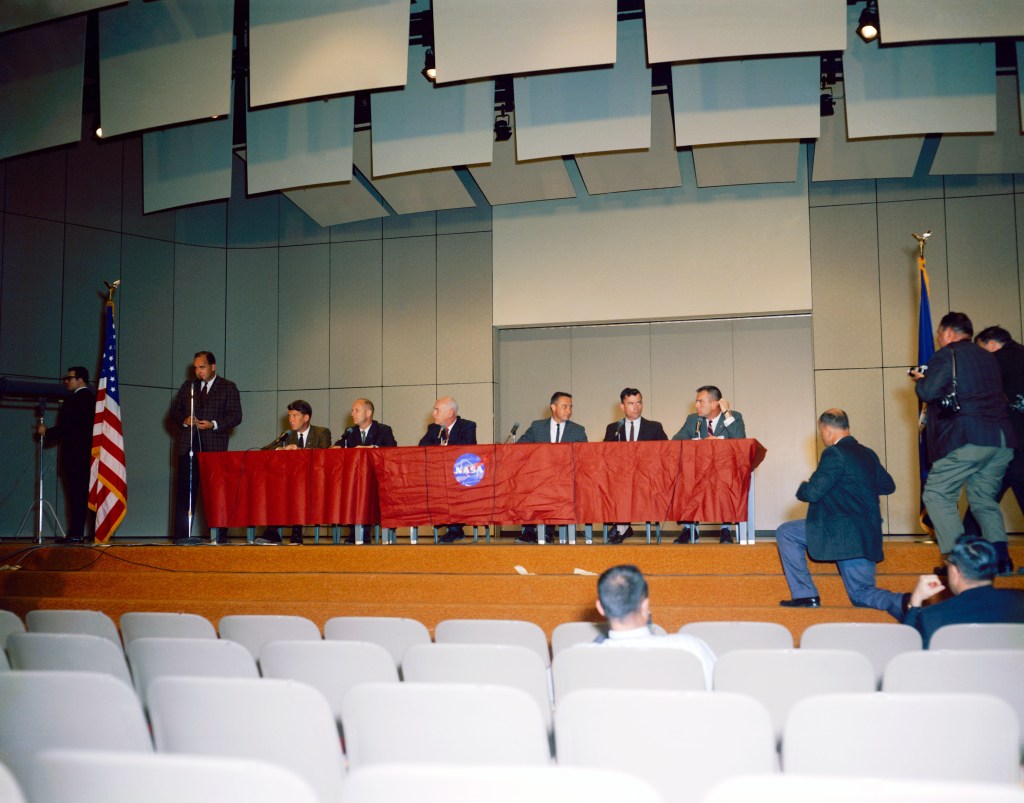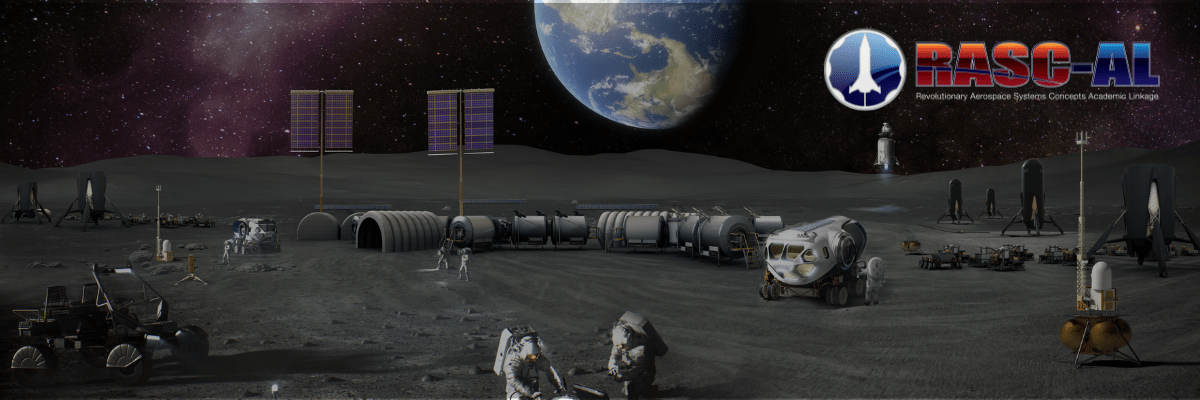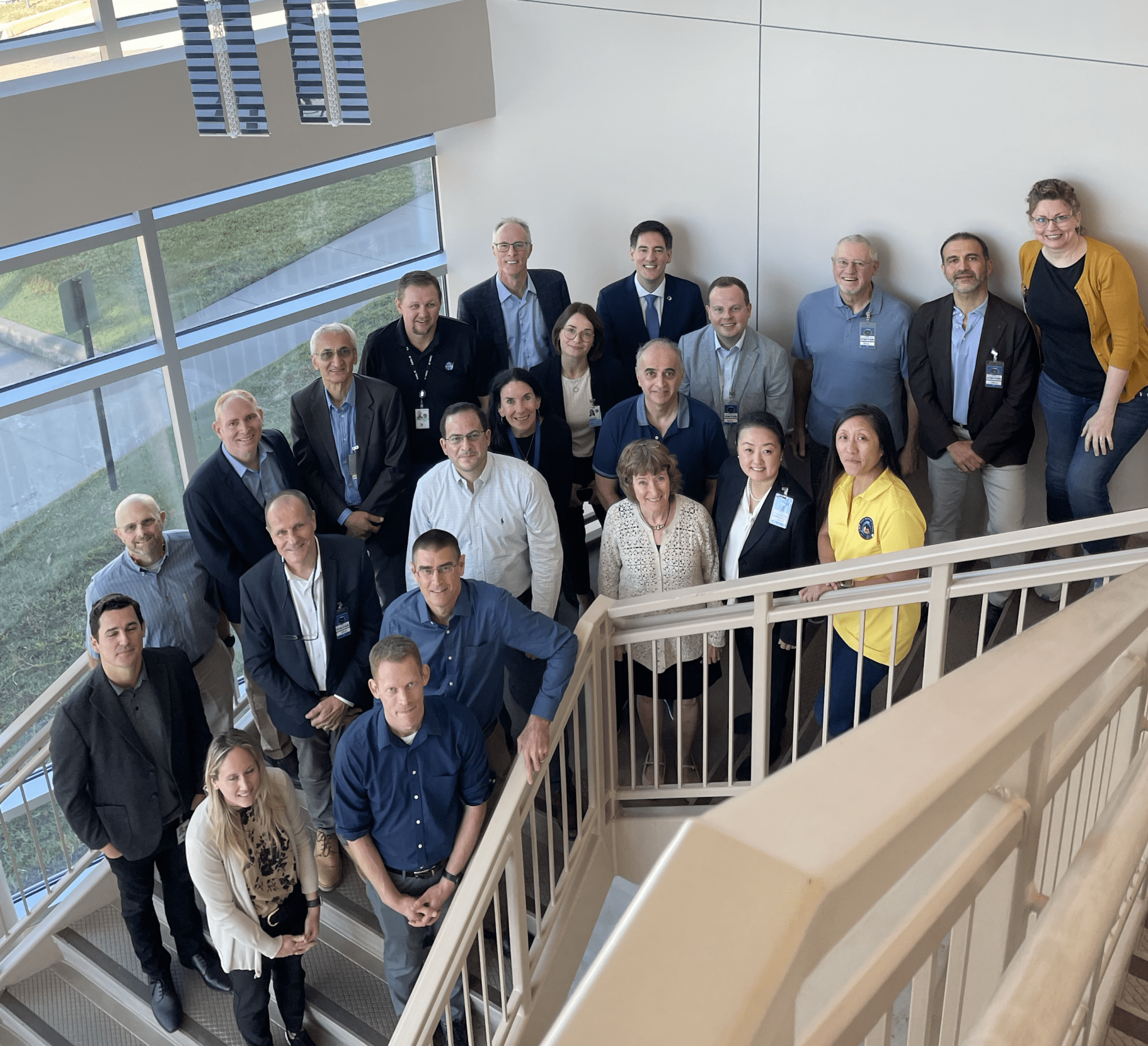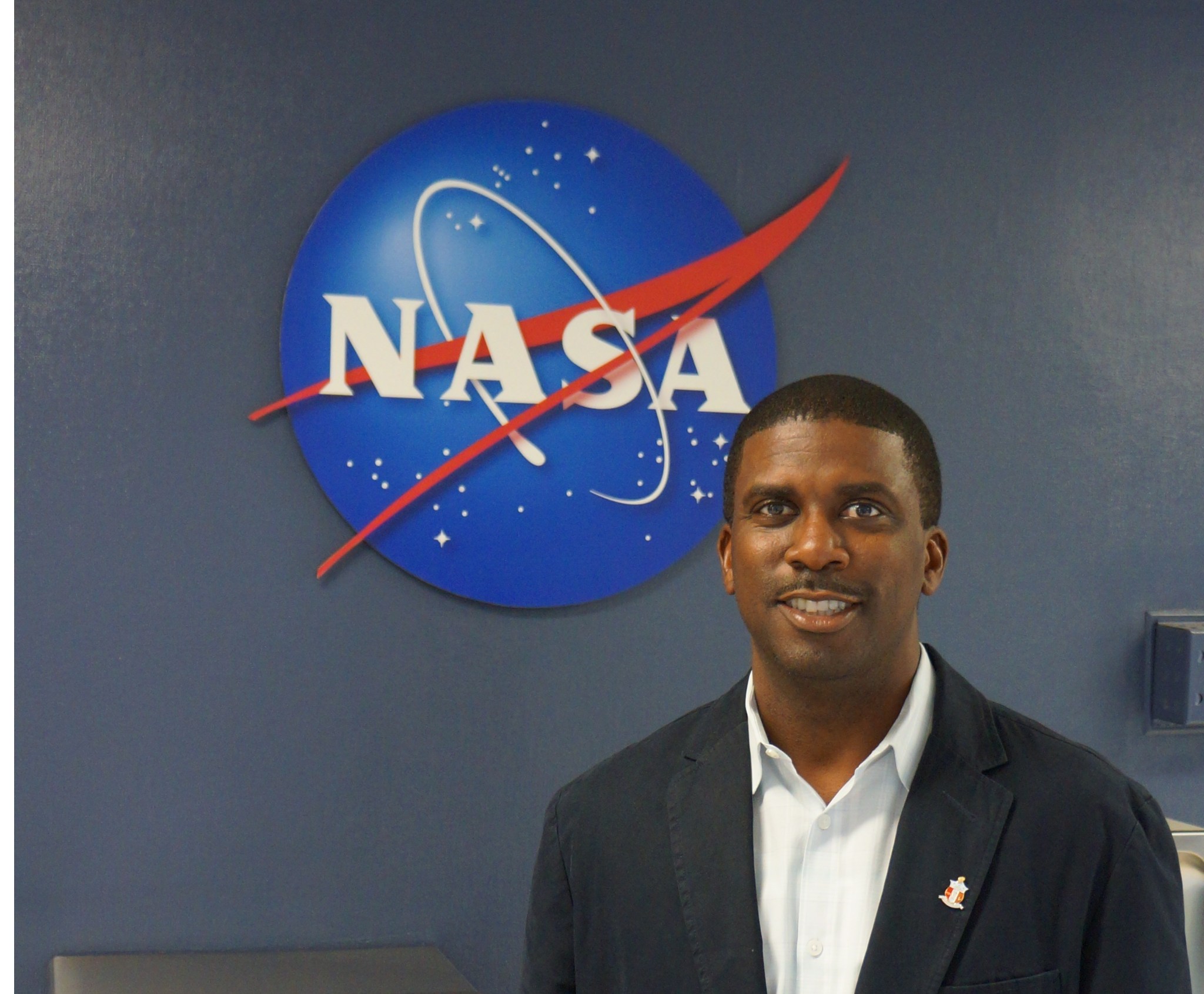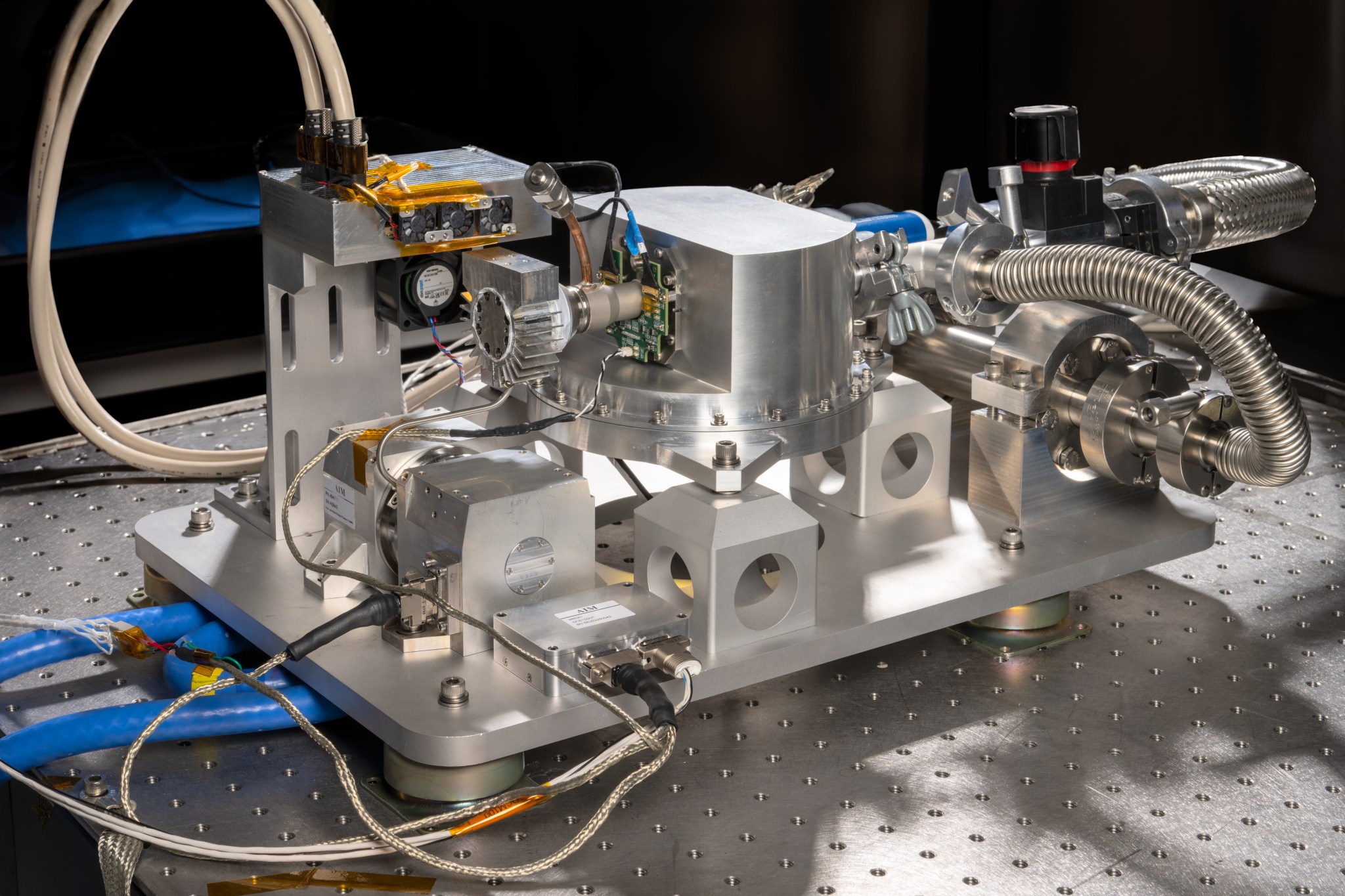2 min read Preparations for Next Moonwalk Simulations Underway (and Underwater) What are the dangers of going to space? For human spaceflight, the first thing I think about is the astronauts actually strapping themselves to a rocket. And if that isn’t dangerous enough, once they launch and they’re out into space in deep exploration, we have to worry about radiation. Radiation is coming at them from all directions. From the Sun, we have solar particles. We have galactic cosmic rays that are all over in the universe. And those cause…
Read MoreTag: General
NASA Receives 10 Nominations for the 29th Annual Webby Awards
2 min read Preparations for Next Moonwalk Simulations Underway (and Underwater) This ultra high-definition video featuring an orange tabby cat named Taters, was streamed from nearly 19 million miles away via laser by NASA’s Deep Space Optical Communications (DSOC) experiment, marking a historic milestone for space communications. Jet Propulsion Laboratory Since it began in 1958, NASA has been charged by law with spreading the word about its work to the widest extent practicable. From typewritten press releases to analog photos and film, the agency has effectively moved into social media…
Read MoreEngineering Reality: Lee Bingham Leads Lunar Surface Simulation Support for Artemis Campaign
If you design a new tool for use on Earth, it is easy to test and practice using that tool in its intended environment. But what if that tool is destined for lunar orbit or will be used by astronauts on the surface of the Moon? NASA’s Simulation and Graphics Branch can help with that. Based at Johnson Space Center in Houston, the branch’s high-fidelity, real-time graphical simulations support in-depth engineering analyses and crew training, ensuring the safety, efficiency, and success of complex space endeavors before execution. The team manages…
Read More60 Years Ago: Gemini III, America’s First Two-Person Flight
On March 23, 1965, the United States launched the Gemini III spacecraft with astronauts Virgil “Gus” Grissom and John Young aboard, America’s first two-person spaceflight. Grissom earned the honor as the first person to enter space twice and Young as the first member of the second group of astronauts to fly in space. During their three-orbit flight they carried out the first orbital maneuvers of a crewed spacecraft, a critical step toward demonstrating rendezvous and docking. Grissom and Young brought Gemini 3 to a safe splashdown in the Atlantic Ocean.…
Read MoreNASA Selects 14 Finalist Teams for the 2025 RASC-AL Competition
This year’s RASC-AL competition invited undergraduate and graduate students from across the nation to develop new, innovative concepts to improve our ability to operate on the Moon, Mars, and beyond.ASA NASA Fourteen university teams have been selected as finalists for NASA’s 2025 Revolutionary Aerospace Systems – Academic Linkage (RASC-AL) Competition. This year’s competition invited undergraduate and graduate students from across the nation to develop new, innovative concepts to improve our ability to operate on the Moon, Mars, and beyond. Finalists will present their proposed concepts to a panel of NASA…
Read MoreRisk of Venous Thromboembolism During Spaceflight
5 min read Preparations for Next Moonwalk Simulations Underway (and Underwater) In-person participants (L-R) – Back row: Jason Lytle, Stuart Lee, Eric Bershad, Ashot Sargsyan, Aaron Everson, Philip Wells, Sergi Vaquer Araujo, Steven Grover, John A. Heit, Mehdi Shishehbor, Laura Bostick; Middle row: Sarah Childress Taoufik, Stephan Moll, Brandon Macias, Kristin Coffey, Ann-Kathrin Vlacil, Dave Francisco; Front row: James Pavela, Doug Ebert, Kathleen McMonigal, Esther Kim, Emma Hwang; Not pictured: Tyson Brunstetter, J. D. PolkOnline participants: Stephen Alamo, Mark Crowther, Steven Nissen, Mark Rosenberg, Jeffrey Weitz, R. Eugene Zierler, Serena…
Read MoreNASA Continues BioNutrients Space-Fermented Food Research
2 min read Preparations for Next Moonwalk Simulations Underway (and Underwater) NASA astronaut and Expedition 72 Commander Suni Williams displays a set of BioNutrients production packs during an experiment aboard the International Space Station. The experiment uses engineered yeast to produce nutrients and vitamins to support future astronaut health. NASA NASA’s BioNutrients series of experiments is testing ways to use microorganisms to make nutrients that will be needed for human health during future long-duration deep space exploration missions. Some vital nutrients lack the shelf-life needed to span multi-year human missions,…
Read MoreStation Nation: Meet Chris Wade, Visiting Vehicle Integration Manager for SpaceX Vehicles
Chris Wade is a visiting vehicle integration manager for SpaceX vehicles in the International Space Station Transportation Integration Office. He plays a key role in ensuring that all vehicle requirements are on track to support SpaceX missions to the space station. Chris also manages a team of real-time mission support personnel who follow launch, docking, undocking, and splashdown operations. Read on to learn about his career with NASA and more! Where are you from? I am from Clarksdale, Mississippi. Tell us about your role at NASA. I manage horizontal integration…
Read MoreNASA Uses New Technology to Understand California Wildfires
3 min read Preparations for Next Moonwalk Simulations Underway (and Underwater) The Compact Fire Infrared Radiance Spectral tracker, or C-FIRST, is managed an operated by NASA’s Jet Propulsion Laboratory, and supported by NASA’s Earth Science Technology Office. Combining state-of-the-art imaging technology with a compact design, C-FIRST enables scientists to gather data about fires and their impacts on ecosystems with greater accuracy and speed than other instruments. C-FIRST was developed as a spaceborne instrument, and flew onboard NASA’s B200 aircraft in January 2025 to conduct an airborne test. NASA/JPL-Caltech The January…
Read MoreFourth Launch of NASA Instruments Planned for Near Moon’s South Pole
A SpaceX Falcon 9 rocket stands vertical on Tuesday, Feb. 25, 2025, at Launch Complex 39A at NASA’s Kennedy Space Center ahead of Intuitive Machines’ IM-2 mission as part of the agency’s Commercial Lunar Payload Services initiative and Artemis campaign. SpaceX Sending instruments to the Moon supports a growing lunar economy on and off Earth, and the next flight of NASA science and technology is only days away. NASA’s CLPS (Commercial Lunar Payload Services) initiative is a lunar delivery service that sends NASA science and technology instruments to various geographic…
Read More